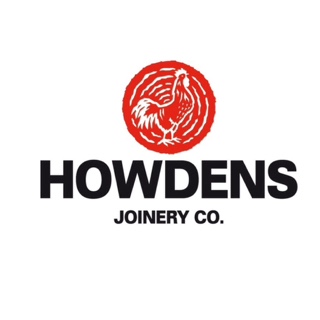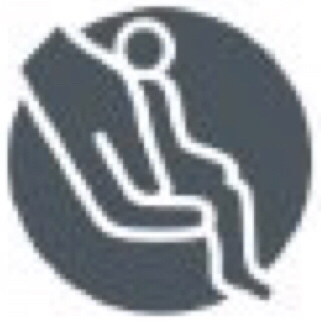Information
-
Supplier Name
-
Audit Title
-
Document No.
-
Performed On
-
Performed by
-
Location
-
Supplier Representatives
Intro
Supplier Information
-
General information
-
Core Products
-
Annual Volume
-
Number of employees (QC employees)
General
General - Control Systems
-
1. Rate the Suppliers internal Audit process?
-
Process should be in place, frequency and scope clearly detailed. <br>Review Supplier Audit Schedulefor overdue items.
-
2. How comprehensive are the available Quality Standards?
-
Should be comprehensive and available at every inspection point, are operators/inspectors aware of the content?
-
3. Rate the Suppliers Planned Preventive Maintenance Schedule?
-
Does it include all machinery, tools and auxiliary equipment?
-
4. Rate the training that personnel are given for their assigned function?
-
Is a training matrix available? Are training records kept, up to date and assessed? Is competency Proven before sign off?
-
5. How strong are the suppliers change management/change controls?
-
Changes to manufacturing processes, plant relocation, documentation changes and approval, drawing changes and approval process. Do they include Customer notification and approval requirements?
-
6. Rate the suppliers ability to demonstrate product performance claims?
-
Are tests carried out in-house or independent labs? <br>Does it meets recognised standards I.E. international Standards BSI etc
-
7. Rate the suppliers capability to trace product end to end?
-
Can the supplier demonstrate effective traceability on an item?
-
8. Rate the suppliers procedure for handling Non-Conformances Report (NCRs)?
-
Is each NCR assigned a unique ref to aid traceability?<br>Is a tracking sheet used to monitor responses?
-
9. Does the supplier use a recognised Problem Solving Method, such as 8D, 5WHY, Ishakawa, Taguchi …?
-
Review a sample of Supplier's corrective actions, How do they handle customer complaints? Check effectiveness of problem solving with quality monitoring and check control plan has been updated.
-
10. Rate the suppliers process of incorporating learning's from field feedback into their CI activity?
-
Improved product design, improved processes
-
11. Rate the Process flow diagram
-
Does it clearly show how the product is made? <br>Are all inspection points identified?
-
12. Is there an effective control plan in place?
-
Product, process, key characteristics, inspections, parameter checks and set-up checks.<br>Is it Signed off by Key Stakeholders?
-
13. Rate the suppliers advanced quality planning process for product development and change.
-
PPAP, AQP, FMEA, Product Approval present and evidence available
-
14. Rate the Process Failure Mode Effects Analysis that has been performed? Are the corrective actions documented, implemented and effective?
-
Applicable if Howdens has requested a Process FMEA. Check that FMEA indices are reviewed and updated on a regular basis
-
15. Rate the suppliers capability to monitor process effectiveness and implement changes for improvement?
-
Use of SPC, process capability studies, kaizen events.
Purchasing
Purchasing - Supplier Selection & Ordering
-
16. Rate how effective this suppliers process is in selecting, vetting and approving their sub-suppliers?
-
Is there a formal process for selection & approval eg, audit, monitoring process?
-
17. Rate the suppliers control of approved sub-suppliers lists for all components, materials and services?
-
Is there an approved supplier list?<br>How is the performance of these Sub Suppliers monitored and evaluated?
-
18. Rate the suppliers process for effective correction & Improvement activities within sub-suppliers?
-
Eg, rejection notes, 8D report etc.<br>Also check the criteria and responsiveness of sub-suppliers in case of customer complaints, Sub-supplier corrective action requests.Does this supplier instigate a CI Culture within its own supply chain?
-
19. How clearly does the supplier express product requirements in their Purchase Orders?
-
Such as: material specifications, important dimensions and tolerances, restricted substances, Shelf Life Etc.
-
20. Have all purchased raw materials been approved by the supplier using a formal process.
-
Check Initial Samples reports for each component and material?
Goods in & Raw materials
Goods In & Raw Materials
-
21. How comprehensive are the available SOPs at GI & Raw Mat. Storage? (Standard Operating procedures
-
These should detail, who, where & What happens.<br>Reviewing the process does this accurately reflect what really happens?
-
22. How comprehensive are the inspection instructions?
-
Are there visual aids or prompts in place to highlight critical features or processes to the operator/inspector? <br>Are these readily available at every inspection point?
-
23. Rate the storage, indentification and traceability of raw materials
-
Should be stored in a dry clean area away from risk of damage<br>How well is Shelf Life Controlled & managed?
-
24. Rate the controls for identifying & segregating non-conforming product from good product.
-
Are there any defined quarantined areas/?<br>Are there any potentials for mixing up product? <br>In automated processes does reject product pass over good stock?
-
25. Rate the completion, storage and retention of key product, process & inspection records.
-
Records should be complete and legible - have any corrections been signed and dated?<br>Are the records stored for an appropriate length of time?
-
26. Rate the Inbound inspections performed by the supplier? Are they according to the Control Plan?
-
Have all critical raw materials been identified?
Production
Production - Manufacturing, Inspection & Packaging
-
27. Rate the work areas for identification, Cleanliness, Organisation & Lighting.
-
Is the Area well lit and well maintained.
-
28. Rate the Key Performance Indicators that are in use?
-
Safety, quality, delivery, cost, people and environment
-
29. How comprehensive are the available SOPs in the manufacturing process?
-
Should also be available at every inspection point
-
30. Rate the suppliers formal start-up/set-up procedure.
-
First part should be approved. In case of a long stoppage in operations, start-up procedure should be applied
-
31. Rate the availability of operating and inspection instructions at the point of use, and operators awareness of them.
-
Check that they are in conformance with Product/Process Control Plan. Do they adequately detail how to perform the operations and what to inspect? Are they Comprehensive Enough?
-
32. Rate the identification, traceability, control & handling of materials, WIP & Finished Product.
-
Does this align with the process flow diagram?<br>Is there any Potential for Mix-up?
-
33. Rate the control of master samples - including usage, availability and correct storage.
-
Applicable if Howdens has requested it.
-
34. Rate the process for root cause analysis and subsequent corrective action of rejects.
-
Is there an established 'non conformity' process in use
-
35. Rate the disposal system in place for rejected material/components?
-
Check that bins are marked with a colour code for easy identification. Do they capture volumes and types of rejected material/components?
-
36. Rate calibration of measuring equipment.
-
Procedure for routine calibration<br>Are there any Out of calibration Items?<br>Are there any instruments Missing?
-
37. Rate packaging effectiveness for protecting the product
-
Have Packaging trials been conducted?<br>Is it already in use and proven Historically?<br>Is it suitable for the Howdens W/H & Distribution systems?<br>Moisture, Dirt, Damage, Heat, racking, lifting weight, stack height
-
38. Rate the inspection approach with respect to protecting the customer i.e Howdens
-
Does it appropriately detect all potential Failure Modes?<br>Does it Address Previous/known product issues seen in NCR's or Field Issues?
-
39. Is the Frequency/Amount of Inspection Appropriate for the type and level of Product Being Manufactured?
-
Are there any Safety Critical or Hazardous Aspects?<br>Is 100% inspection needed or feasible?<br>
-
40. How closely does the Control Plan follow the actual process.
-
Do the operators know what to do in case of O.O.S?<br>who is responsible, When, Where, How, How often?
Warehousing
Warehousing - Storage & Despatch
-
41. Rate the process to monitor incoming /WIP /finished goods inventory?
-
How good is the Stock Rotation System? <br>Look for empty shelves or an excess of one particular item & investigate further, does the system figure match?
-
42. Rate the storage of finished goods
-
Should be stored in a dry clean area away from any risk of damage & contamination.
-
43. Does the supplier respect the validity dates for perishable items?
-
Adhesives, sealants, paints/lacquers, process aids.<br>Could these have a detrimental effect to product performance if out of date?
-
44. Rate the identification of finished goods according to Howdens requirements?
-
Is there any potential for product mix-ups?<br>How robust is the traceability and labelling of items?
Tools
-
Bottleneck Analysis
-
Inspection Specifications/Quality Standards
-
Visual Factory
-
Go/No-Go Gauges
-
Goods inwards Checks
-
5s
-
1st Off Last off Inspection
-
Control Plans
-
Standard Operating Procedures & Records
-
Basic Testing/Lab
-
PDCA Process
-
SPC - Process
-
Pareto Charts
-
Ishikawa Diagrams
-
Approved Supplier Selection
-
Process Flow Diagrams
-
FMEA'S
-
O.E.E.
-
SPC - Product
-
Extensive Testing /Lab
-
Part & Process Audits
-
Gauge R&R's
-
KPIs for key manufactured products or manufacturing processes
-
8D's
-
JIT
-
Andon
-
SMART Objectives
-
APQP
-
DFM / DFSS
-
Finite Element Analysis
-
Hoshin Kanri
-
Value Stream Map
-
Continuous Flow Processes
-
Automated Inspection Points
-
Accredited Test lab Facilities
-
Kanban
-
TPM
-
Heijunka
-
Jidoka
-
Poka-Yoke
-
Product Innovation
-
SMED











